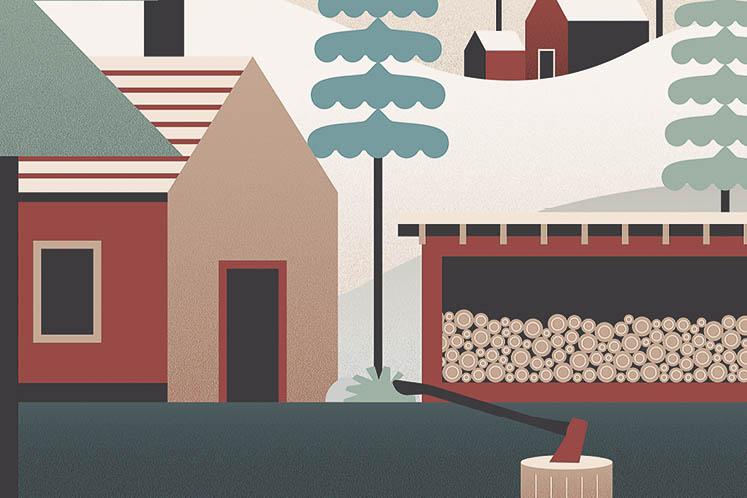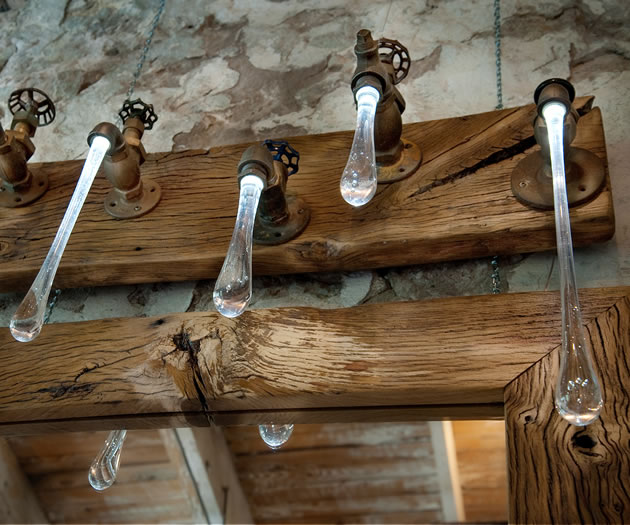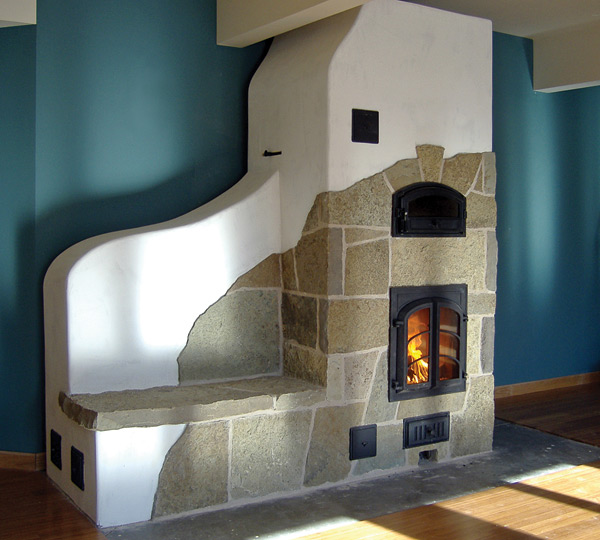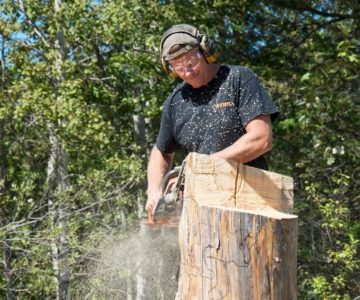Striking a Cord
Everything you need to know about what type of wood to burn, and how to source, store and stack it all.
It may look like fall out there, but winter is coming. If you enjoy curling up in front of a fire, it’s time to get prepped for fireplace season by replenishing your wood stores. Whether you’re a newcomer to wood-burning fireplaces and stoves, or just need a reminder to get on top of it, here are some key essentials to ensure a warm winter.

Illustration by Ruth Ann Pearce
The best wood to burn
Maple, beech, ash and oak are the most plentiful species of hardwood in the Headwaters area, says Rolf Meeser, the owner of Creemore-based J&R Firewood. All these varieties are very dense and produce long-lasting coals, though he recommends ash as one of the best overall choices. “It has an easy-to-split grain, low smoke levels and a long-lasting burn rate.” And, sadly, with the devastation wrought by the emerald ash borer, there’s plenty of it available these days.
Kim McKenzie, one of the owners of Caledon Fireplace notes the wood you burn can have an impact on the operation and maintenance of a wood-burning stove or fireplace insert. For best results, she urges customers to burn only well-seasoned – i.e., split and air-dried – wood. Meeser says ideally wood you buy will have been cut, split and seasoned for at least six to eight months.
“Properly seasoned wood is darker, weighs less and sounds hollow when hit against another piece of wood,” McKenzie says. “To ensure the best and most efficient burn, your firewood should have a moisture level between 15 and 20 per cent. You may want to invest in a moisture meter to test your wood before burning.”
If the wood is not well dried, it will be difficult to light and won’t burn efficiently. The excess moisture can also create more smoke and release compounds which lead to creosote buildup on chimney walls. That can cut off airflow, preventing the smoke from ascending the chimney and making it linger in the air you’re breathing. A buildup can also lead to chimney fires. (Be sure to call a chimney sweep for recommendations on how to best maintain your chimney.)
Doing the math
The measurement unit for firewood is a cord, which is 128 cubic feet of cut and split firewood. “If piled in one spot, your stack should measure 4 feet high, by 4 feet wide, by 8 feet long,” Meeser says. “If the wood is cut and split 12 inches long, four rows of wood comprise a cord. If it’s split 16 inches long, then three rows of wood make a cord. We sell what is commonly known as a face cord, which is 42 cubic feet and piled in one 4-foot by 8-foot row.” The current price of a face cord is about $160.
So how do you determine how much wood you need? That’s largely dependent on the efficiency of your fireplace and how you use it – is it a heat source or more recreational? Meeser says precision comes with experience. “Seasoned burners who rely on wood to heat their home can burn up to six cords of wood a winter, depending on the size of the house, type of stove and severity of the season. If you are new to the burn game, I recommend starting the season with one cord to see how that goes. Firewood is available all season and you can always replenish your supply.”
Stacking and storage
Getting your first delivery ordered early in the season gives you ample time to organize your woodpile. Meeser stresses wood must be kept in a cool, dry place because exposure to sun, wind and rain will cause it to deteriorate. Ideally wood needs to be covered with a tarp or roof. A woodshed set apart from your home is best if you have one, as stacking wood against your house may encourage pests and rodents to set up housekeeping.
When it comes to stacking, firewood enthusiasts will tell you there’s an art to creating the perfect pile that not only looks good, but keeps moisture levels in check. If storing outside, make sure you elevate your stack at least six inches off the ground to prevent any water rot on the bottom rows of wood. Stack in rows, bark side up, using a crosshatch pattern – two pieces one way topped with two pieces perpendicular to the first pair. Another method which has gained popularity in Canada is a Scandinavian woodstacking method in which wood is piled in a circular configuration. Additional wood layers are stacked around the perimeter with any odd-sized or small pieces thrown in the middle.
Related Stories

Deep Water Wood
Sep 16, 2016 | | ArtsHistory in the Making. For these furniture designers, style and story go hand in hand.

Wood Up
Mar 23, 2014 | | Fence PostsOn a farm with fencerows and five acres of bush, wood is basically free.

Soul of the Home
Sep 15, 2008 | | EnvironmentIn Finland, masonry heaters are known as “heart of the home,” and in Russia it’s “soul of the home,” reflecting the importance they have in people’s lives.










